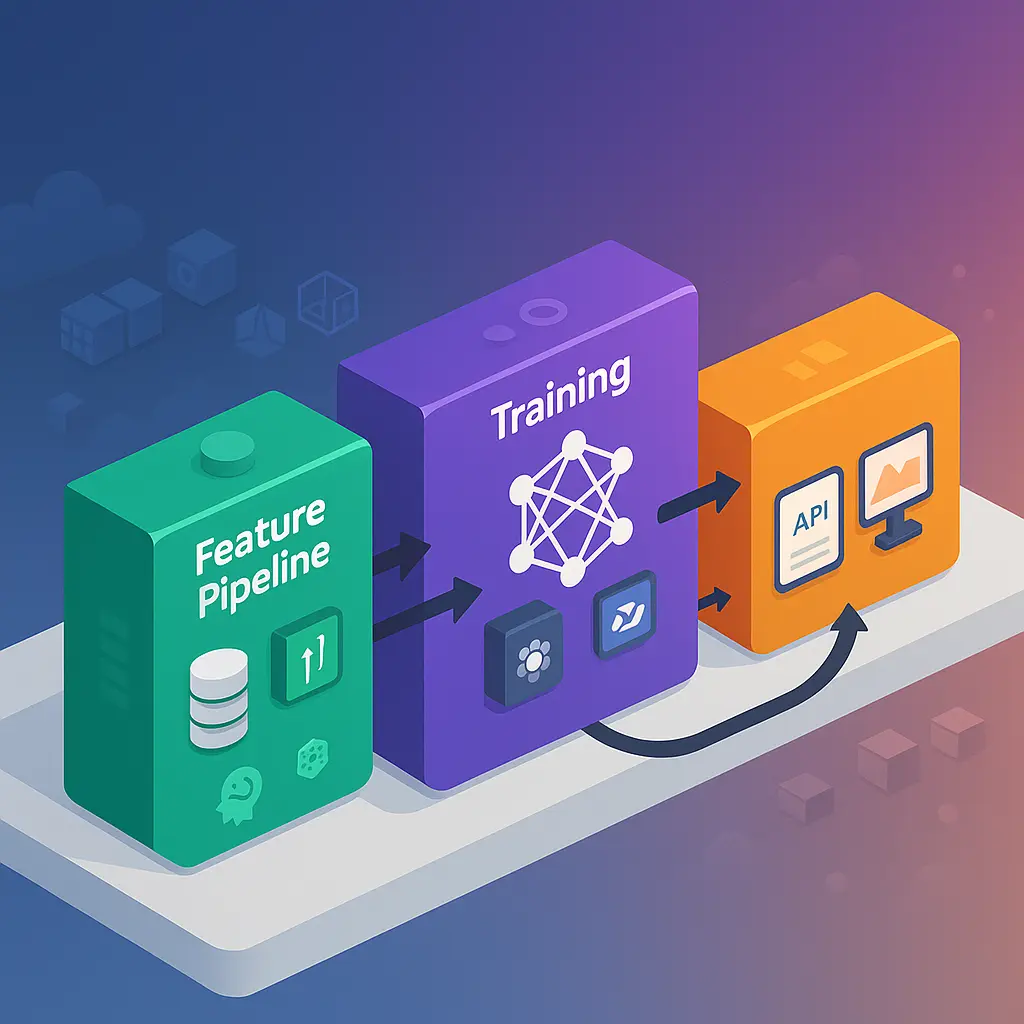
What is AI Native and why should I care?
Learn to navigate the Cloud Native to AI Native transition. Avoid common mistake…

In today's rapidly evolving technological landscape, the shift from building cloud-native platforms to embracing platform engineering has become more critical than ever. As organizations continue to adopt cloud-native architectures and strive for platform maturity, understanding how to build, maintain, and evolve these systems over time is essential. This blog post explores key principles that underpin platform engineering in the context of building and evolving cloud-native platforms, emphasizing how maturity becomes increasingly important over time, and offering insights into how you can keep your platforms effective throughout their required lifespan.
Building platforms involves the initial creation and deployment of components to solve specific problems. While it's a crucial phase, it represents just the starting point. Platform engineering 1, however, encompasses a broader scope; it involves designing, developing, and maintaining the platforms that support applications at scale, with a focus on achieving and sustaining platform maturity over time. This discipline ensures that systems are robust, scalable, and maintainable over their entire lifecycle, evolving from initial solutions into mature, stable platforms that meet long-term organizational needs.
In cloud-native environments, this distinction is significant. The dynamic nature of cloud platforms demands a holistic approach that goes beyond the initial creation. Platform engineering focuses on creating resilient foundations upon which applications can thrive, adapting to changing requirements and technologies, and guiding platforms towards maturity.
The lifespan of software can vary. Some applications are short-lived, serving immediate needs, while others are foundational systems expected to operate and evolve many years. In the cloud-native world, it's unrealistic to apply the same practices universally across this spectrum. Recognizing where your platform sits on the maturity curve is key to applying the right engineering strategies.
As platforms mature, the importance of disciplined engineering practices becomes more pronounced. Mature platforms need to handle increased complexity and scale, which demands a higher level of sophistication in engineering approaches. This shift reflects the increasing importance of maturity over time, as platforms that lack mature practices may struggle to meet long-term organizational needs.
As platforms evolve, maturity2 becomes a key factor in their success. Mature platforms exhibit qualities such as stability, reliability, and the ability to adapt to new requirements without significant rework. Platform engineering is the practice that guides platforms along this path of maturity, ensuring they develop the necessary capabilities to support the organization's goals over time.
Investing in platform maturity through engineering practices is not just about solving today's problems but preparing for future challenges. Mature platforms are better equipped to handle:
By focusing on maturity, organizations can build platforms that remain robust and relevant, providing a solid foundation for future innovation.
For mature platforms it is important to be adaptable while maintaining stability. This means being capable of responding to changes in:
Mature platforms are designed with evolution in mind, allowing them to respond effectively to changes without compromising stability or performance. This adaptability is not an afterthought but a result of intentional platform engineering that prioritizes long-term maturity.
Hyrum's Law states:
"With a sufficient number of users of an API, it does not matter what you promise in the contract: all observable behaviors of your system will be depended on by somebody."
In cloud-native environments, where platforms and services are consumed by numerous clients, unintended dependencies on system behaviors can form. Understanding and anticipating the implications of Hyrum's Law is a sign of platform maturity. Mature platforms incorporate practices that minimize unintended dependencies through:
This maturity enables platforms to evolve without causing disruption to their users, maintaining reliability and trust over time.
Repetitive tasks should scale efficiently with minimal human intervention. In cloud-native platforms, automation is key. Implementing well-defined policies helps:
Mature platforms leverage automation not just for efficiency but as a strategic asset that contributes to their overall stability and scalability. Policies are powerful tools that make building and maintaining processes scalable and manageable as your platform grows, reinforcing the platform's maturity over time.
Process inefficiencies and technical debt often accumulate slowly. Like a frog in gradually heated water, teams might not notice these issues until they become critical problems. In cloud-native platforms:
Mature platforms proactively address inefficiencies and technical debt, recognizing that neglecting these areas can erode the platform's effectiveness over time.
Specialized expertise in platform engineering will yield significant benefits:
Mature platforms are often the result of sustained investment in expertise and talent. Combining this expertise with economies of scale amplifies the impact, making investments in talent and training highly valuable and contributing to the platform's maturity.
While being data-driven is essential, it's important to recognize that:
In cloud-native environments, where conditions change rapidly, maintaining flexibility in decision-making processes is crucial. Mature platforms balance data-driven insights with strategic flexibility, allowing them to adapt without losing sight of long-term goals.
The technology landscape is in constant flux, especially within the cloud-native sphere. Adaptable platform engineering requires:
Mature platforms are supported by teams that value continuous learning and are resilient in the face of change. By embracing change, organizations position themselves to capitalize on new opportunities and maintain relevance.
Transitioning from simply building cloud native platforms to embracing platform engineering is essential for organizations aiming to maintain and evolve their cloud-native environments effectively. Platform engineering is fundamentally about guiding platforms towards maturity, ensuring they develop the robustness, scalability, and adaptability required for long-term success. By understanding the differences in lifespans, embracing adaptability, and leveraging expertise, you can ensure that your platforms not only survive but thrive as mature systems in the long term. Remember, the goal isn't just to construct something that works today but to engineer mature platforms that remain robust, scalable, and relevant for years to come.
Are you ready to elevate your cloud-native platforms to a higher level of maturity?
By applying these principles, you'll be well on your way to achieving excellence in platform engineering and guiding your platforms towards lasting maturity.
--- Ready to take the next step in your platform engineering journey? Our team of experts is here to help you navigate the complexities of building and evolving cloud-native platforms. We'll work with you to set up a platform engineering team tailored to your organization's needs, ensuring your platforms achieve the maturity required for long-term success. Contact us today to unlock the full potential of your cloud-native platforms.

Learn to navigate the Cloud Native to AI Native transition. Avoid common mistake…
Learn how to build a comprehensive AI platform architecture. From development to…

Maximize ROI in platform engineering by treating platforms as products. Discover…
Get a shared vocabulary of proven Transformation Patterns, common Anti-Patterns, and Paradigm Patterns to have more effective, data-driven conversations about your strategy and architecture.
For a personalized starting point, take our free online assessment. Your results will give you a detailed report on your current maturity and suggest the most relevant patterns to focus on first.
Every Tuesday, we deliver one short, powerful read on AI Native to help you lead better, adapt faster, and build smarter—based on decades of experience helping teams transform for real.